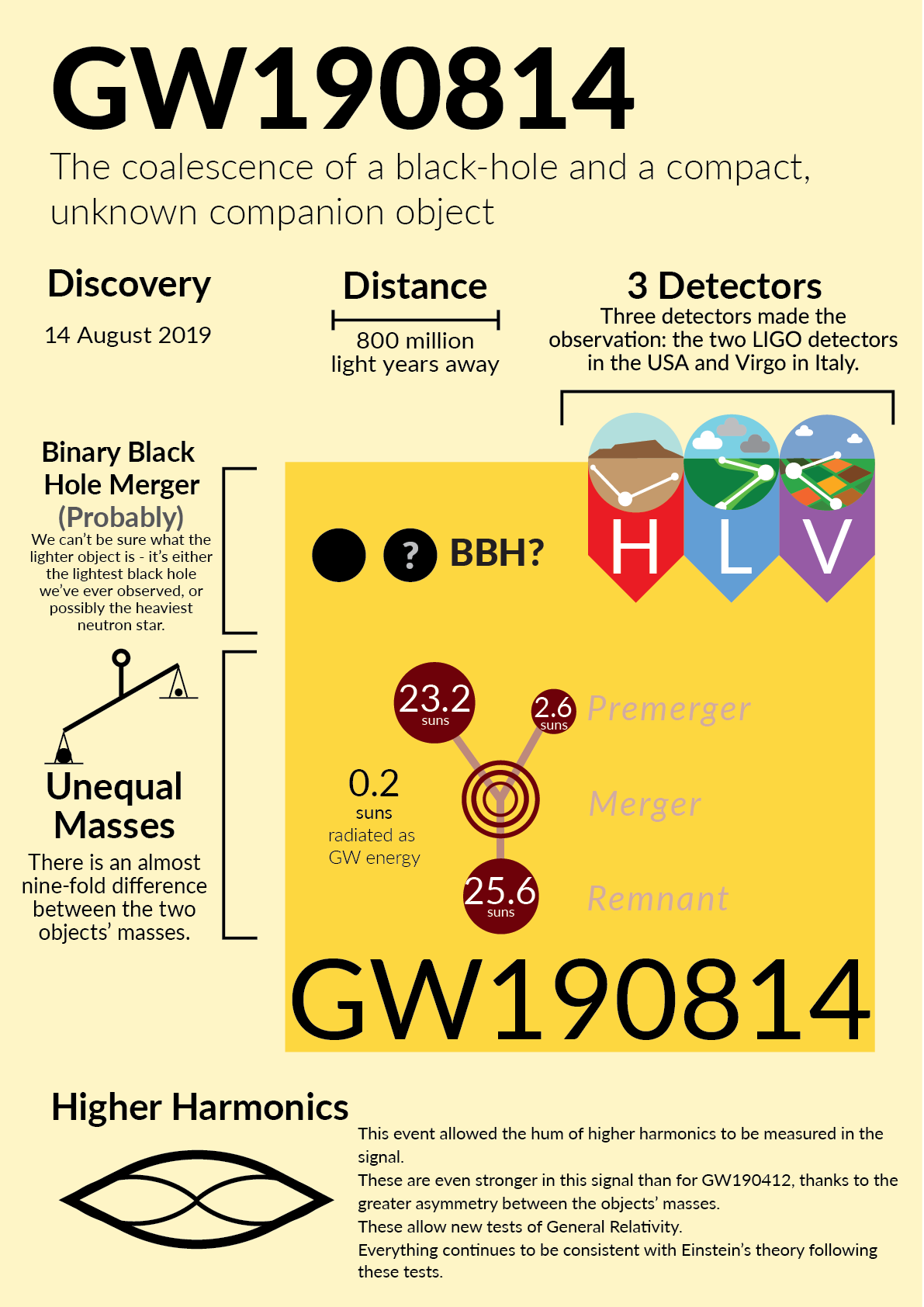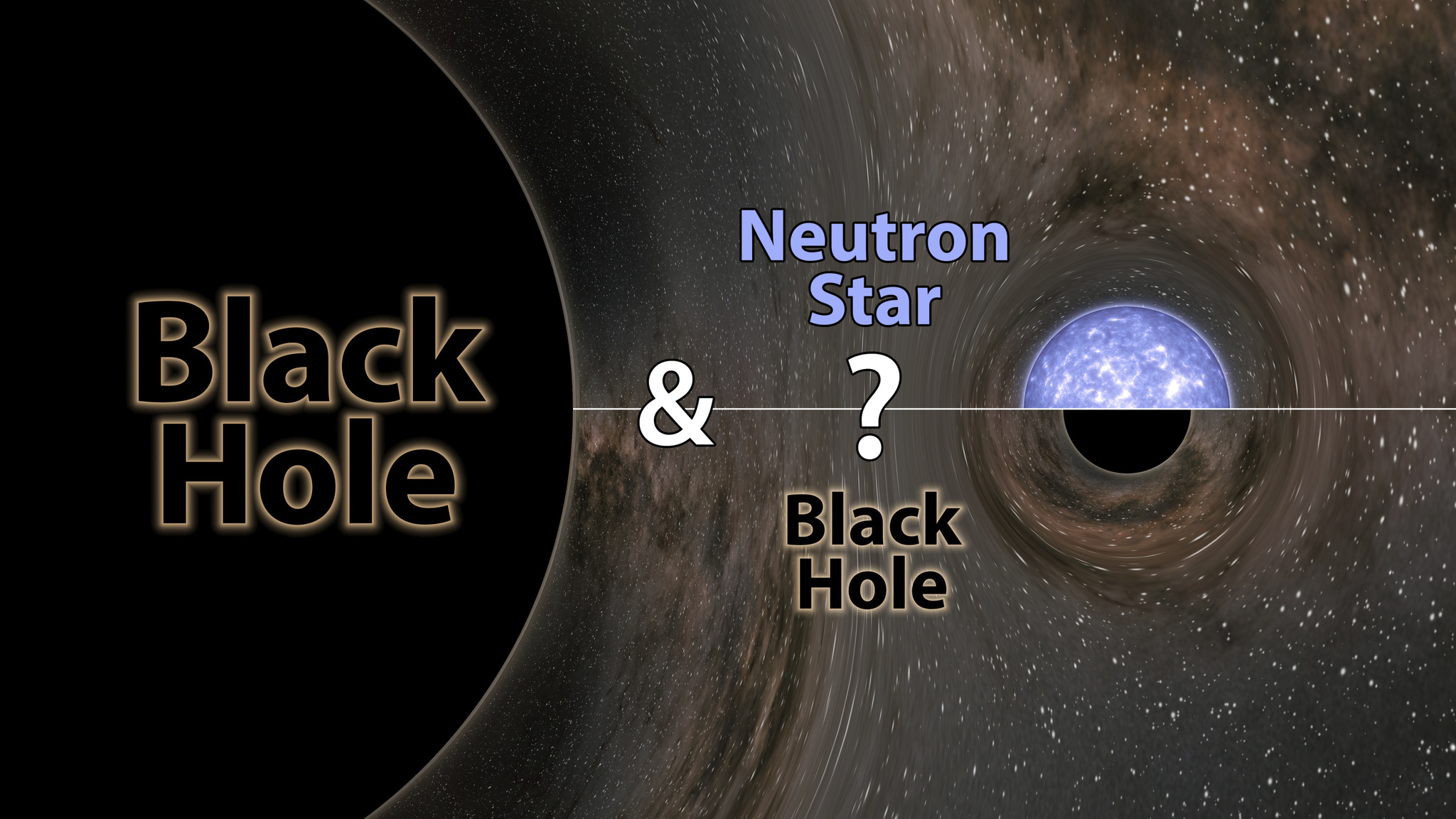
Image: Robert Hurt, IPAC/Caltech
The network of two advanced-LIGO detectors (at Hanford, Washington and Livingston, Louisiana, USA) and the advanced-Virgo detector (in Cascina, Italy), have detected gravitational waves from the inspiral and merger of a stellar-mass black hole and another compact object of undetermined nature on 14.08.2019 at 21:10:39 UTC, the event has been accordingly named as GW190814. Scientists from several Indian research institutes participated in the analysis and made key contributions to this discovery. LIGO-India will provide significant help in solving such mysteries.
GW190814 detection paper is available here
Highlights of the discovery
GW190814 has two outstanding features that make it unique:
- Before the two objects merged, their masses differed by a factor of 9, making this the most extreme mass ratio known for a gravitational-wave event. In comparison, the recent LIGO-Virgo event GW190412 had a mass ratio of about 4:1.
- From the measured mass of the lighter compact object, we can infer it to be either the lightest black hole or the most massive neutron star ever discovered in a compact binary system. But at this point, we can’t be sure which one it is.
- The GW190814 source was localized to a small area in the sky of about 20 square degrees following which alerts were sent out to the astronomical community. Follow-up searches carried out by dozens of ground- and space-based telescopes across the electromagnetic spectrum and with neutrinos did not turn up any optical counterparts to the gravitational wave signal.
- Had we observe an electromagnetic counterpart, which may not have happened due to a number of reasons, we could say the smaller object is most likely a neutron star.
Together, these features challenge our understanding of the masses of compact astrophysical objects and the way they end up in merging systems.
Important Science Case for LIGO-India
LIGO-India will be able to play a major role in solving these mysteries. Owing to its geographical location relative to the other detectors on the globe, LIGO-India will enable much more precise localisation of the compact binary merger events. The electromagnetic (EM) telescopes will then be able to scan a much smaller area on the sky to look for possible optical, X-ray, gamma ray, radio emission from the events. For GW190814 no EM radiation has been detected so far, but this could also be because the telescopes had to scan through such a large area on the sky that by the time they reached the correct spot, the intensity of any radiation that might have been emitted had already become too faint. Detection of EM radiation could provide strong evidence that one of the companion stars is not a black hole. This would also allow pin-pointing the galaxy where the merger event happened, enabling more precise measurement of the Hubble constant, which is the rate at which the universe is expanding.
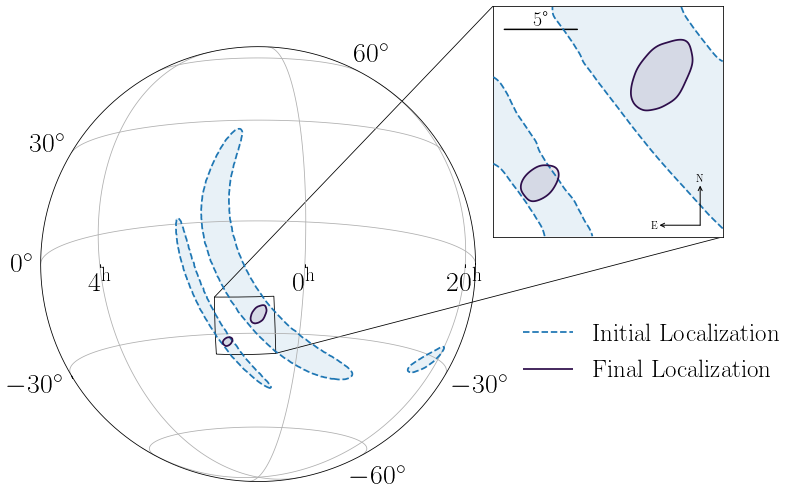
To know how these detections can provide an independent estimate of cosmic expansion and resolve the present tension, click here.
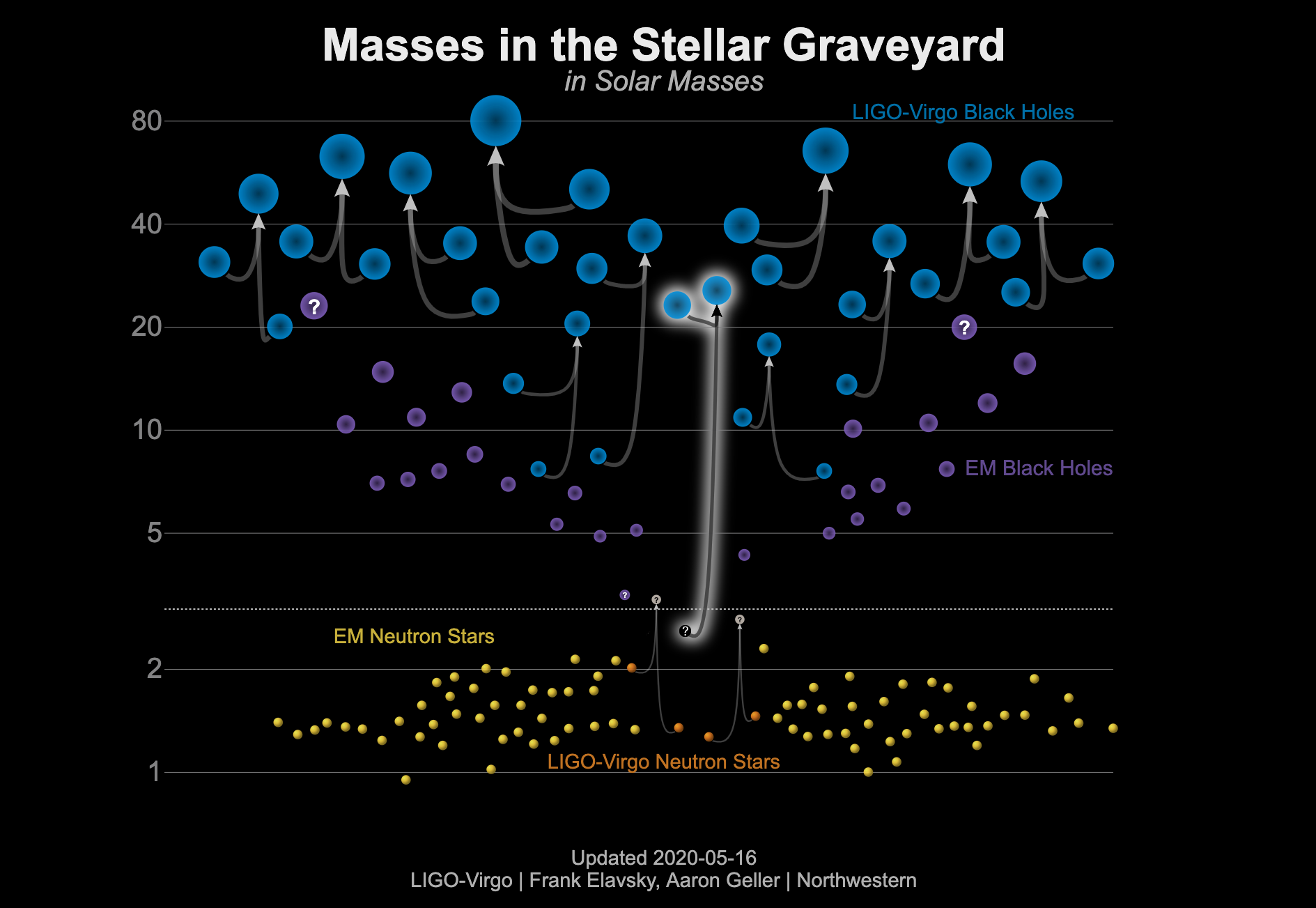
Visualization of the compact binary merger GW190814
Visualisation of the coalescence of two black holes that inspiral and merge, emitting gravitational waves. One black hole is 9.2 times more massive than the other and both objects are non-spinning. The high mass-ratio amplifies gravitational-wave overtones in the emitted signal. The gravitational-wave signal produced is consistent with the observation made by the LIGO and Virgo gravitational-wave detectors on August 14th, 2019 (GW190814). Details can be found in the text here: https://www.youtube.com/watch?v=p4xHz-If6kw
Credit: N. Fischer, S. Ossokine, H. Pfeiffer, A. Buonanno (Max Planck Institute for Gravitational Physics), Simulating eXtreme Spacetimes (SXS) Collaboration
Indian Contributions
Gravitational radiation from compact binaries is predominantly emitted at twice the orbital frequency. This is analogous to the main sound that you hear when plucking a guitar string. However, just like musical instruments, gravitational radiation from such systems is also predicted to ring at higher harmonics of this fundamental frequency. The asymmetric masses of the GW190814 system allowed for these subtle (faint) components of the signal to be better “heard”. The evidence for higher-multipoles in this event was much stronger than in the recently discovered binary black hole merger event GW190412.
Scientists from IIT Gandhinagar and Chennai Mathematical Institute collaborated with LIGO-Virgo researchers to analyze data which resulted in the convincing discovery of the faint, sub-dominant components of the signal, as predicted in Einstein’s theory of gravitation.
Scientists from Chennai Mathematical Institute also contributed an analysis which confirmed that the binary is consistent with a binary black hole, though the measurements do give room for one or more of the binary constituents not being a black hole.
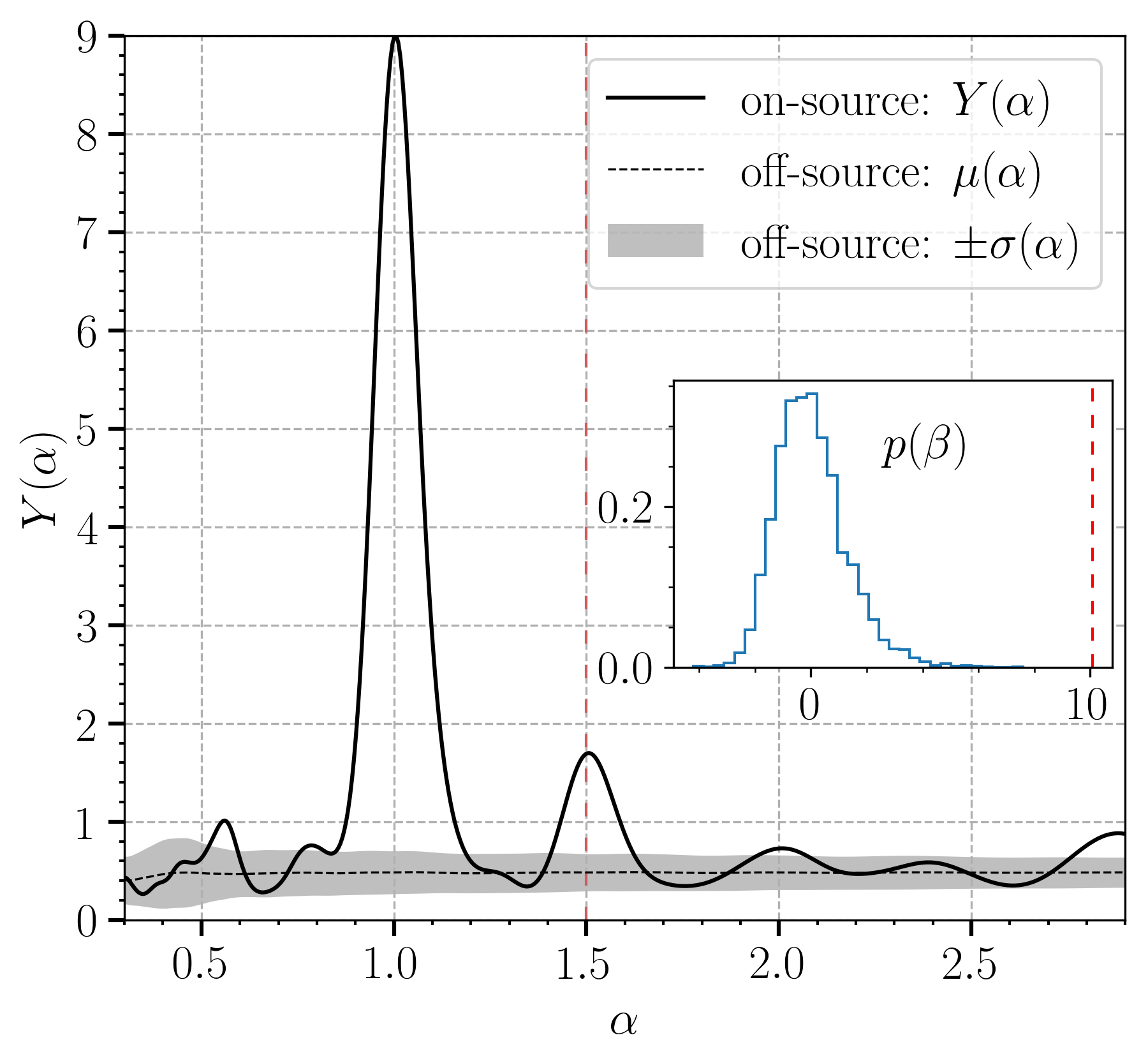
Left: Time-Frequency spectrogram of the GW190814 event, clearly showing the chirping waveform for the dominant (quadrupole) and the next-dominant (octupole) components.
Right: The dominant peak at alpha=1.0 is the energy in the quadrupole mode of the GW190814 signal, whereas the prominent (but smaller) peak at alpha=1.5 is due to the octupole component. This is the strongest ever signature of octupole signal seen in LIGO-Virgo events. The inset shows the distribution of the background, which is strongly contrasted against the foreground (red vertical line). The conclusion from this inset is that the detection is extremely robust!
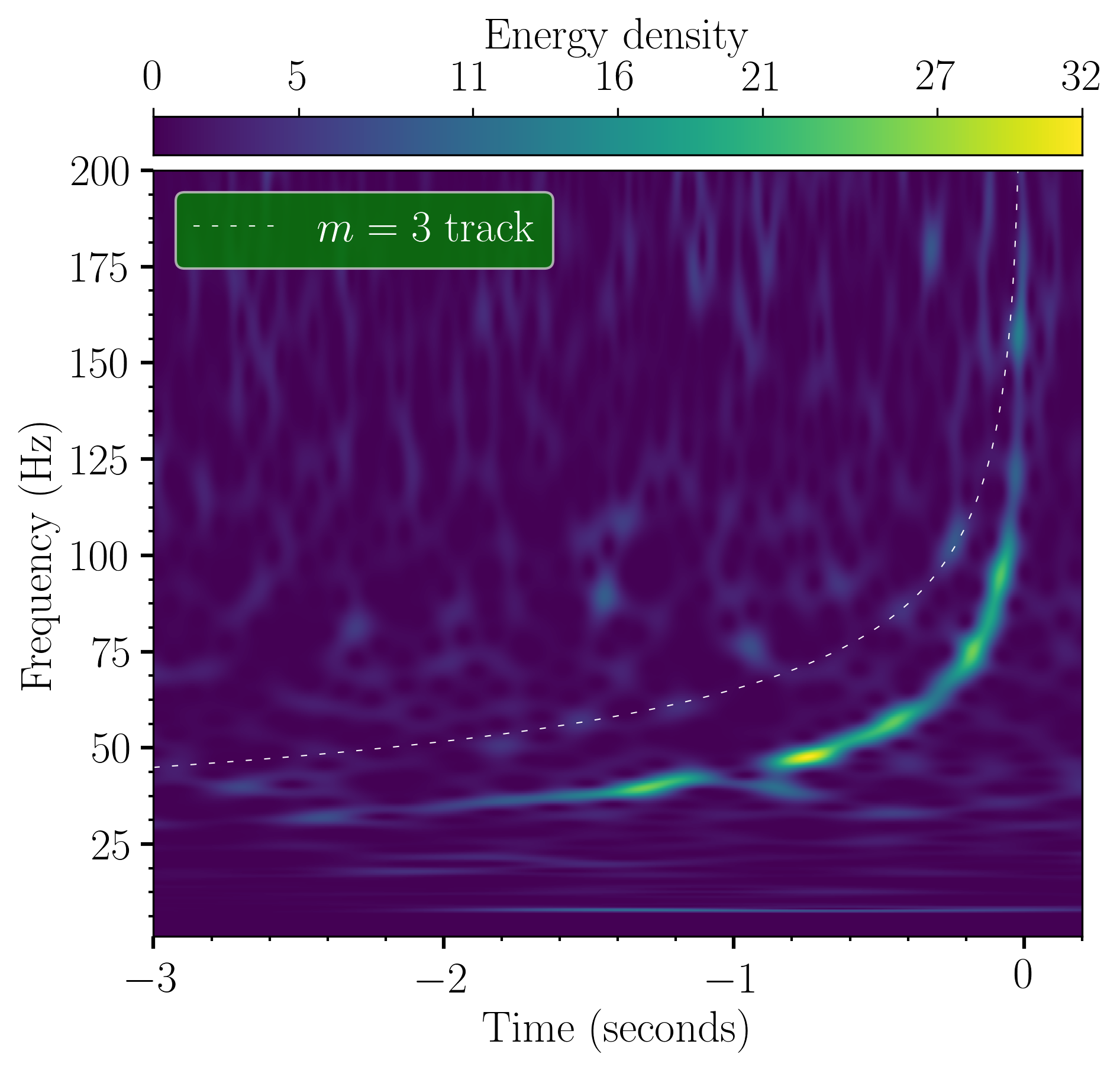
A rich legacy
The Indian team in LIGO includes scientists from CMI Chennai, DCSEM Mumbai, ICTS-TIFR Bangalore, IISER Kolkata, IISER Pune, IIT Bombay, IIT Gandhinagar, IIT Hyderabad, IIT Madras, IPR Gandhinagar, IUCAA Pune, RRCAT Indore and TIFR Mumbai.

